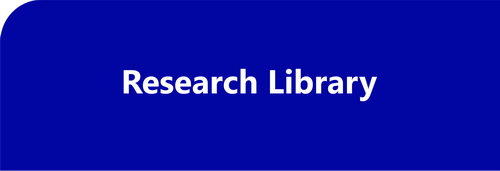
SOCIAL STYLE®: Working Across Cultures
Cultural differences in an international workforce can be significant, introducing valuable synergies and challenging obstacles at the same time. Understanding and interpreting the nuances of communication, organizational structures and team norms is important to realizing the productive potential of diversity. To that end, training that revolves around cultural understanding is important to building an international workforce with the ability to work effectively together over long distances.
At the same time, however, people around the world share common behavioral patterns and certain ways of thinking, approaching situations and sharing their ideas with others. Certain characteristics go deeper than culture, coming from the core of our shared human psyche. Behavioral Style training levels the playing field of cultural diversity by focusing on those universal characteristics that can be found in people of any culture.
Culturally diverse colleagues share many behavioral traits:
- Communication styles
- Conflict response patterns
- Time-management priorities
- Risk-taking preferences
- Relationship vs. accomplishment orientation
Enhance Global Collaboration
As the corporate environment continues to grow more dependent on technology, the capability and even necessity for international business grows as well. Benefits of strategic global training include instituting a global culture among internationally operating corporations, creating a common suite of performance standards and establishing standardized, efficient business processes.
TRACOM’s SOCIAL STYLE training breaks down the barriers of borders by:
- Allowing us to better understand the behavioral styles of people from all over the world
- Giving learners the tools to adapt our Style to enhance our interactions with people of different Styles, cultures, and/or nationalities.
- Utilizing global norms to help us understand variances in SOCIAL STYLEs.
Collaboration is oftentimes difficult. Even with our co-workers right down the hall, knowledge sharing isn’t always easy. It takes a great deal of organization, communication, and time management. Then try implementing collaboration efforts with people on the other side of the planet, it is very difficult. .
Yet international collaboration generates so much value. According to a story on NPR, in the science world you are much more likely to be published in a prominent publication if you utilized international collaboration in your study or research.
The same goes for attempting to make a sale, appeal to a new demographic, or understand a new foreign software. When we capitalize on our global resources we produce higher quality work, and when we know how to appeal and interact with unique cultures we increase our effectiveness tenfold.
Conducting International Business with SOCIAL STYLE
Around the globe different cultures have different behaviors and beliefs. And while most people recognize that these differences exist, they don’t necessarily understand the differences nor how to adapt to them. The power of SOCIAL STYLE is in understanding behavioral differences and modifying our own behavior to improve interactions. This can be especially important – and challenging — in international situations.
TRACOM’s research shows that Style is a global concept; it exists across nationalities. However, every culture is unique, and this is sometimes reflected in the way Style and Versatility are displayed. For this reason it is important for people to use norms that reflect their specific cultures.
For example, in China displays of Assertiveness are generally more direct than in western societies. If we compared China and the U.S. on this dimension, the Chinese average would be higher (more Tell Assertive) than the U.S. average. Therefore, we develop norms for China that adjust for their unique culture. This provides a more meaningful measure of Style and Versatility for people in China because they are being measured relative to others within their culture.
Utilizing Global and Cultural Norms
Some companies that develop behavioral style and personality measures do not provide cultural norms, claiming that behavior is so similar across cultures that norms aren’t necessary. However, TRACOM’s research has shown that this is not the case, and cultural norms address critical differences in how behavior is displayed and interpreted.
TRACOM offers a variety of international norms to reflect the culture and behavioral standards of individual countries and geographic regions. In doing so, people receive feedback that is most meaningful for them.
- TRACOM offers 85 SOCIAL STYLE Universal norms, which includes updates to 50 existing norms and the addition of 35 new norms.
- SOCIAL STYLE Profiles are offered in a wide variety of international languages. The use of local-country language results in more effective training programs.
All of TRACOM’s online profiles use norms for accuracy. In addition to our standard North American norm, TRACOM has developed a variety of international norms to reflect the culture and behavioral standards of individual countries and geographic regions. In doing so, people receive profiles that are most meaningful for them.
TRACOM’s SOCIAL STYLE is a global resource for business improvement. If you are a forward thinking company, having international behavioral style awareness is an important tool for continued success. An understanding of SOCIAL STYLE and the ability to exercise Versatility with people of other styles can strengthen relationships across borders to enhance team performance and boost the connectedness of employees around the globe.
Working Across Cultures Research and Resources
SOCIAL STYLE Norms Overview Video
If you are using our Profiles outside the U.S., it’s important to understand cultural differences and how they can impact training programs. Norms tailor an assessment and profile to a specific audience such as geography or job function. See why they matter.
Relationship Between Versatility and Diversity Among Leaders
This TRACOM study found that managers with high Versatility skills were rated significantly more effective at promoting diversity and inclusiveness than managers with lower Versatility by evaluating various diversity and inclusiveness (D&I) measures.





